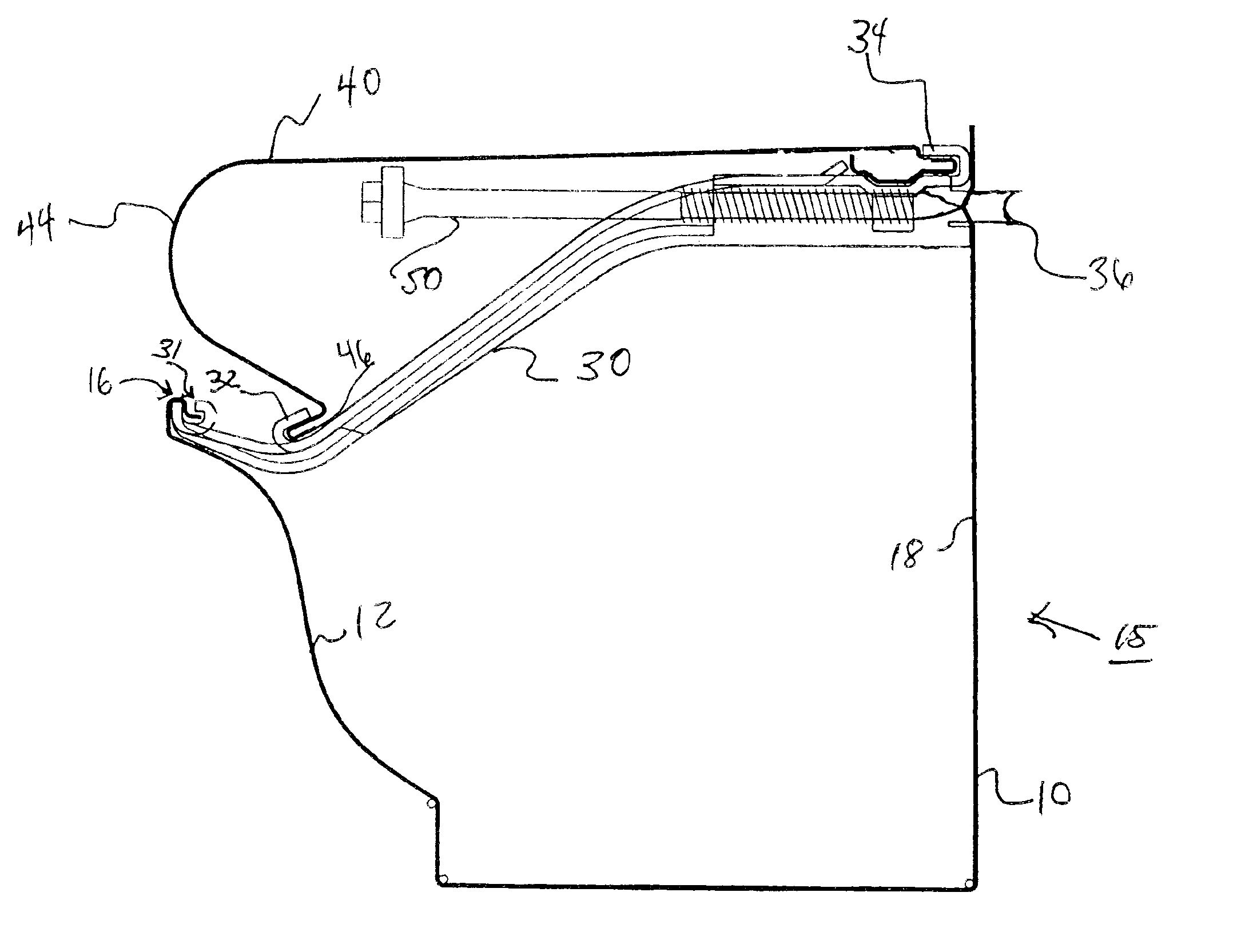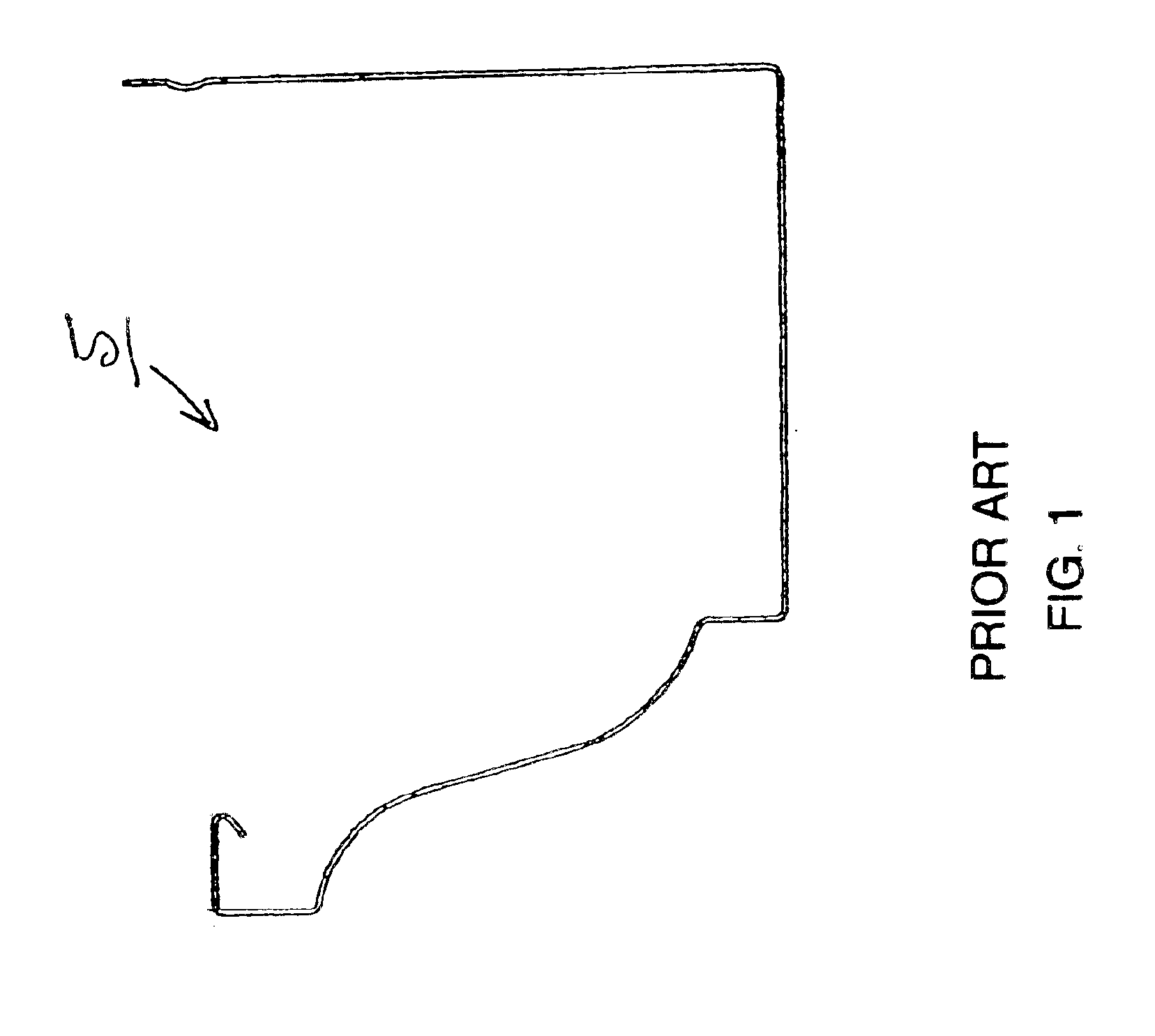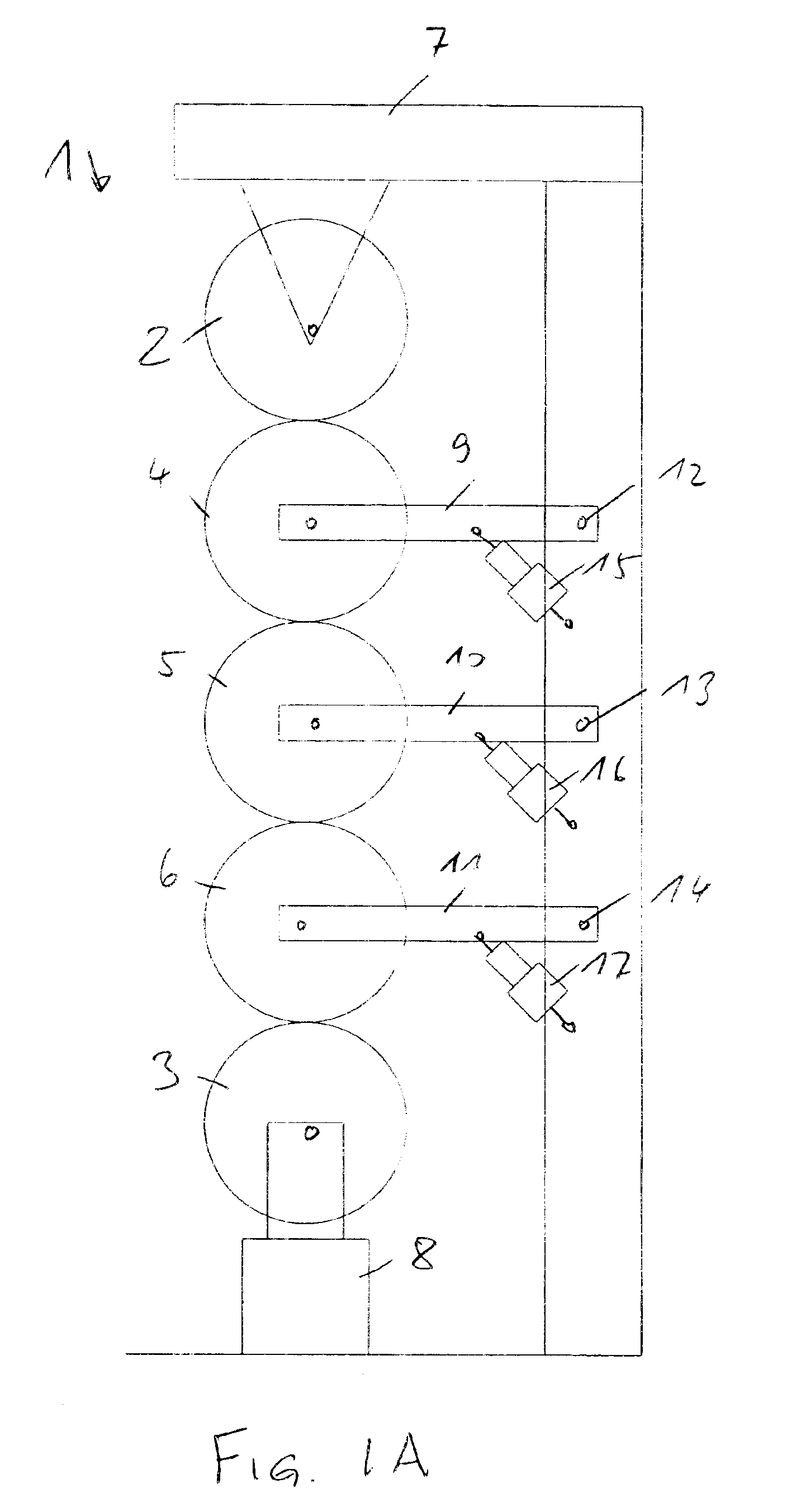Diversion system and method
a technology of diversion system and diversion system, which is applied in the direction of roof drainage, machine supports, manufacturing tools, etc., can solve the problems of system malfunction, and significant problems, and achieve the effect of precipitating roof and structural rotting as well as erosion
- Summary
- Abstract
- Description
- Claims
- Application Information
AI Technical Summary
Benefits of technology
Problems solved by technology
Method used
Image
Examples
Embodiment Construction
[0031]FIG. 1 depicts a cross-sectional view of a prior art trough 5 of standard configuration that is common in the field. As shown in FIG. 1, the depicted trough 5 has a folded edge or shelf along its front containment wall.
[0032]FIG. 2 depicts a cross-sectional view of a trough 10 configured in accordance with a preferred embodiment of the present invention. Trough 10 has a front containment wall 12 that has an inwardly projecting shelf 14 that is part of containment wall border area 16 of front containment wall 12. Trough 10 has a back wall 18. As shown, containment wall 12 need not be a planar wall but may take a variety of shapes and configurations to provide a containment function for collected liquid. Between front containment wall 12 and back wall 18, a channel is formed for water collection and diversion bottomed with floor 20. In an embodiment having a rounded or “half-round” trough, it will be recognized that there is no distinct floor 20 and front containment wall 12 and...
PUM
| Property | Measurement | Unit |
|---|---|---|
| Length | aaaaa | aaaaa |
| Level | aaaaa | aaaaa |
Abstract
Description
Claims
Application Information
 Login to View More
Login to View More - R&D
- Intellectual Property
- Life Sciences
- Materials
- Tech Scout
- Unparalleled Data Quality
- Higher Quality Content
- 60% Fewer Hallucinations
Browse by: Latest US Patents, China's latest patents, Technical Efficacy Thesaurus, Application Domain, Technology Topic, Popular Technical Reports.
© 2025 PatSnap. All rights reserved.Legal|Privacy policy|Modern Slavery Act Transparency Statement|Sitemap|About US| Contact US: help@patsnap.com



